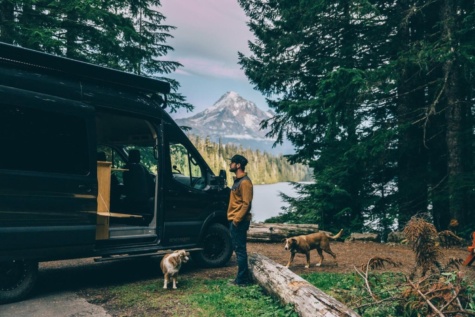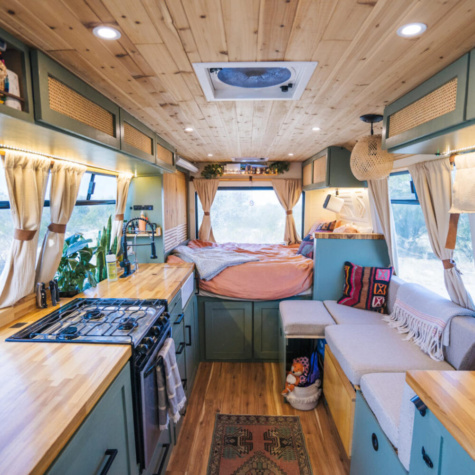
Ava Miller | Opinion Editor
Van life, a lifestyle built around the basis of living in a van, has become increasingly more popular since the surge of COVID-19. It got its start in the 1960s, when the youth of America, tired of the status quo, consolidated their life to their van and wherever their heart took them. It was a short term lifestyle used to follow bands like the Grateful Dead as they toured across America, but it was also for many a long term, more permanent brand of life. The popularity of van life has had a steady increase in the last few years as the cost of living rises, but also as social media influencers glamorize it.
As the cost of living skyrockets and the pressure of society becomes more harsh, many young adults have taken to the nomadic lifestyle to liberate themselves from the binding constraints of society. With a van as a home, you can take your life anywhere on the continent. Many find it freeing to not be tied down and have the ability to see the wonders of Earth. Van life and the free lifestyle that comes with it has become a new aesthetic on social media. Many influencers who have taken to the road share their journey as a way to fund their lifestyle.

Kayla Shanafelt pointed out that “This lifestyle is 100% glamorized by the media”. The new age van life is portrayed to be much more clean and orchestrated when what is seen is the expensively designed vans with hardwood floors, dishwashers, showers and other luxuries that are not usually associated with a lifestyle taken to escape economic constraints. Many influencers living the glamorized version of van life force the question of if the new age of van life is truly an inexpensive lifestyle.
This exposes the cons of the nomadic lifestyle. Yes, in the long run, money will be saved because there is no mortgage or bills to pay, but starting off can be costly. The price of vans have skyrocketed since the beginning of covid coinciding with people’s desire to leave the chaos of the global pandemic and live in nature away from the crumbling world. Not only is the van itself expensive, but remodeling your van to be aesthetic and homey like the influencers could cost you thousands of dollars more. Shanafelt points out “most that do it are out of financial convenience”. Especially with the unsteady high prices of gas, the idea of starting out can be daunting.
When asked what would stop him from choosing the nomadic life on wheels, Christian McCleary put it bluntly: “the fear of poverty”.
Amongst all the apparent cons lies some positive impacts. Off the grid lifestyles are incredibly beneficial for our environment, as long as the campers leave no trace. The cuts in electricity, water, and material goods lessen the environmental impact the nomads have, even considering their usage of gas. Drawing away from society reduces your environmental impact because you withdraw yourself from the fast paced consumer culture.
Of course, this lifestyle is unpredictable and not for everyone. It can be unorganized and impulsive, but for so many adventurous people, it is all worth it when you get to wake up to the rocky mountains, or take a morning swim in a great lake. The realization that you won’t have monthly payments due and you are living your life for the next adventure is what makes the van life worth it for so many people.

Interesting! That picture of the inside of the van is outrageously cute. Great article.
I like the way you presented both the pros and the cons. You did not romanticize the van life style. Rather, you offered it as an option.